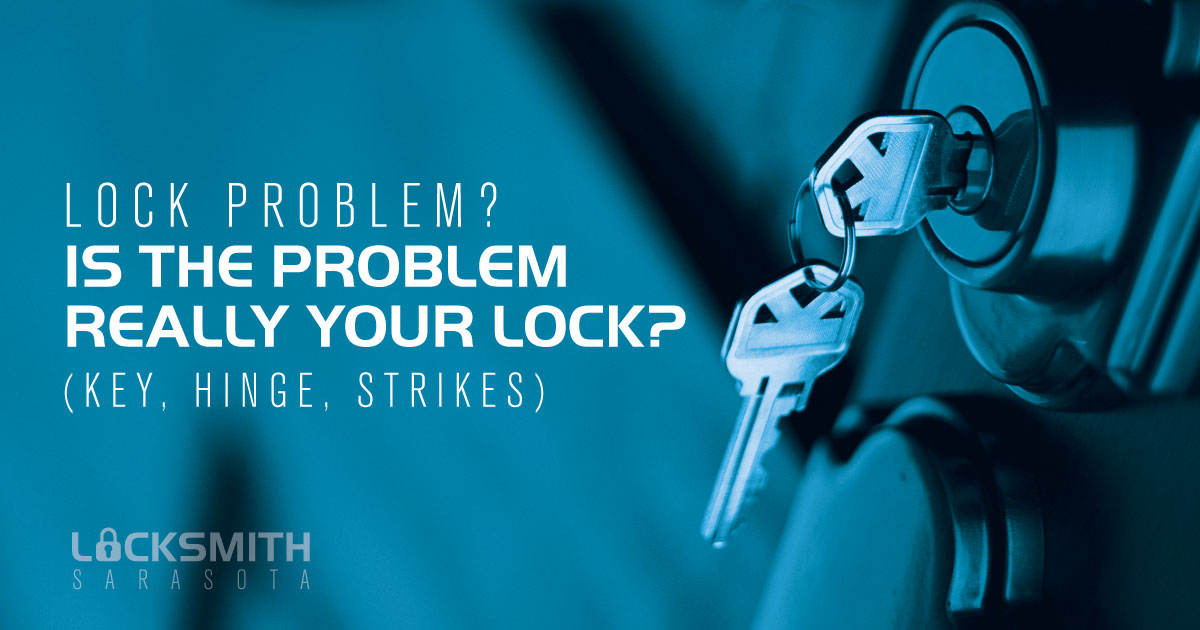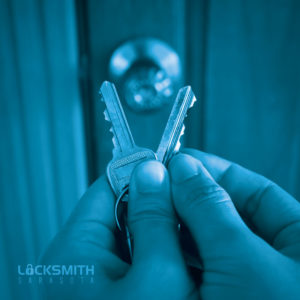



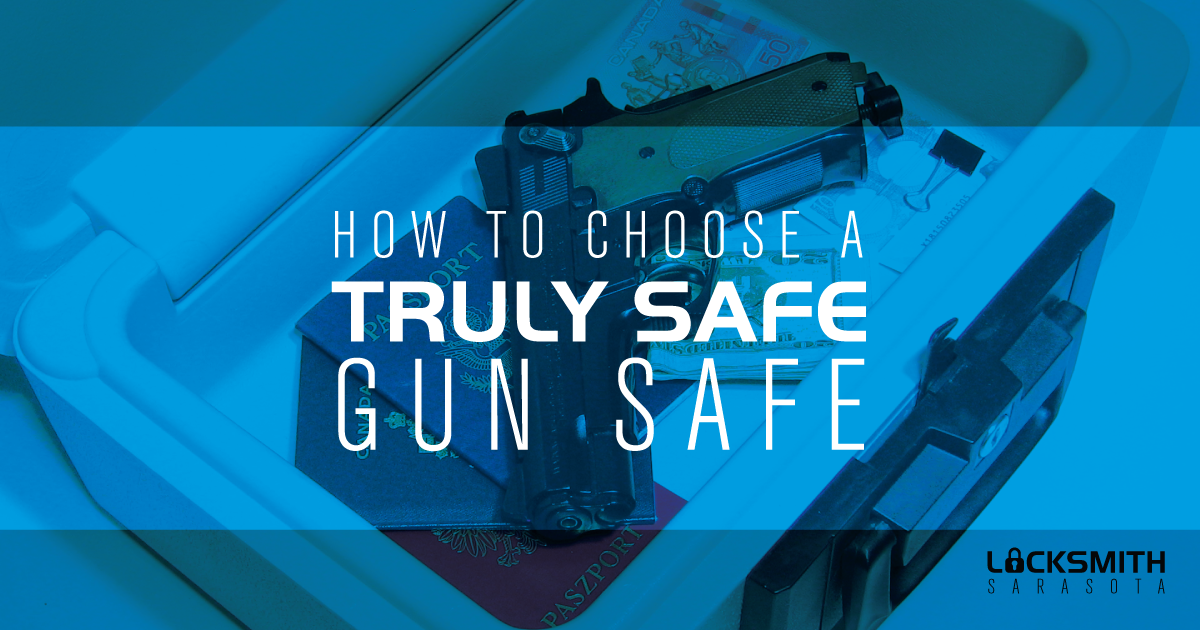
Quality Matters When Choosing a Gun Safe
Gun sales have been on the rise for the past decade as more citizens opt to take a proactive role in self-defense. More than 16 million looked to reduce food costs by hunting. With gun ownership comes responsibility. Proficiency in the use of the weapon and buying a gun safe to store the weapon are vital.
Because of the latter, gun safe sales have also increased. With demand comes the inevitable onslaught of providers looking to fill the need. Unfortunately, that means there are a number of gun safes on the market, particularly from foreign sources, that are anything but safe. The use of a gun safe lets users lower their guard – with tragic results when the safe fails.
In addition to protecting the family, particularly children, a gun safe is also vital for securing the guns so they are not stolen. For a gun safe to achieve this goal it must be durable – both the safe itself and the locking mechanism. Concealability can also be a factor, particularly with small handgun safes.
Types of Gun Safes
Gun safes fall into two categories – small gun safes and larger safes. Deciding which to get depends on several factors.
Type of Guns Owned
It is common sense that if you have something larger than a handgun a large safe is needed. However, going with a large gun safe may still be the best bet when numerous guns are owned or anticipated down the road. Additionally, large safes afford more security from theft. A small handgun safe can be easily transported for opening at the thief’s leisure. Keep in mind that the majority of people who have bought a gun safe invariably wish they had bought a larger one.
Space Restraints
How much space there is in the home influences the type and size of a gun safe to get. Owning one or two handguns with no expectation to obtain rifles or shotguns permits a handgun safe. Available space will determine the size of a larger safe, again go larger than you think you’ll need. In addition, make sure it is possible to secure the safe by bolting in place.
Accessibility
How often and under what circumstances you want to be able to reach your weapon also affects the decision. There are advantages of handgun-size safes, particularly when quick access is desired. To offset the theft danger, a concealable and/or bolted-in safe should be obtained. A large safe can be accessed fairly readily with optimal placement, but having a handgun safe nearby can give time to get to it in a break-in situation.
What to Look for When Buying a Gun Safe
As already noted, the durability of the safe and the locking mechanism are critical. Gun safes are built to varying specifications in order to provide different price points. There is a minimum you should look for, but going to the better or the best is advisable. The majority of the following are applicable mostly to large safes, but the quality is important with smaller units as well.
Steel Thickness




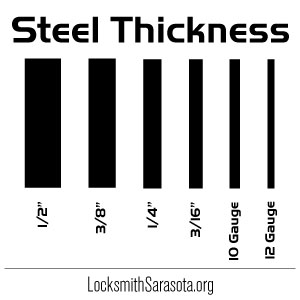 Seven gauge is the minimum thickness of the outer door sheet, while ten gauge would work for the walls thickest sheet. In reality, this thickness is only good for keeping honest people out. Better would be ¼” plate for the outer door sheet, and seven gauge for the walls thickest sheet. Best would be ½” and ¼”, respectively. In addition, go with plate doors rather than composite, which is steel wrapped around sheetrock. A thinner plate door is better than a thicker composite door.
Seven gauge is the minimum thickness of the outer door sheet, while ten gauge would work for the walls thickest sheet. In reality, this thickness is only good for keeping honest people out. Better would be ¼” plate for the outer door sheet, and seven gauge for the walls thickest sheet. Best would be ½” and ¼”, respectively. In addition, go with plate doors rather than composite, which is steel wrapped around sheetrock. A thinner plate door is better than a thicker composite door.
Construction
Look for continuous, full penetration body welds, exterior door hinges, and a full-length seal. Also, consider the fire rating. A minimum gun safe has gypsum drywall which affords no fire protection at all. A better option is fiberglass/ceramic wool. The best is poured concrete amalgamate. Both better and best will have a steel inner fire liner.
Fire ratings are based on the duration of a fire, but the many variables involved with a fire mean these are only rules of thumb, not guarantees. Still, one rated for 2.5 hours would last longer than one rated for 30 minutes.
A common misconception is that a concealment method negates the need for a well-constructed safe. Just because a firearm is “hidden” in a hollowed-out book doesn’t mean an inquisitive child won’t find it. Not to mention that experienced criminals know all the tricks.
Country of Origin
Opting for the USA made isn’t just to support American industry or to not support a country that has restrictive gun laws. It makes sense in this case for a couple additional reasons. First, a quality safe should be heavy. The shipping costs alone would either inflate the price considerably or result in a low quality lighter substitute.
The second reason is that other countries use unsafe materials. For example, gun safes from China may include drywall with pyrite or formaldehyde which will corrode your firearms. It is wise to confirm that all parts of the safe were made in the USA and that it wasn’t just manufactured here with foreign components.
Lock
A weak lock on a strong safe is like having a weak link in a chain. Not only will it permit access easily by someone determined (and make no mistake about it, kids are determined!), but the lock will wear out quickly and be unreliable. A criminal in your home isn’t going to wait around while you fiddle with a defective lock.
The way to judge a good lock is to review the UL rating. If it doesn’t have a UL rating, don’t buy it. A gun safe lock should be UL 768 Group II or better. Safes with UL 768 Group II will provide better protection from basic assaults. Group I affords some protection and is certainly superior to a non-UL rated lock.
Keep in mind that the gun safe lock can be replaced and upgraded by a safe smith, so you don’t need to let a poor lock be a deal breaker if all other criteria are met. Choose which type of lock you want – mechanical dial or electronic keypad – and they’ll be able to swap it out later. Give them a call before completing the purchase to confirm and find out the cost.
Mechanical Dial vs Electronic Keypad
There are advantages to each type of lock, but the majority of purchasers opt for electronic keypad over the mechanical dial, in fact roughly 90% do. It is partially because of aesthetics, but there are other benefits as well. An electronic keypad is opened quicker (<10 seconds vs. up to 45 seconds) and is visible in the dark. Electronic keypads also do not require fine motor skills which can be diminished in a stress situation, permit multiple combinations, and have many optional features.




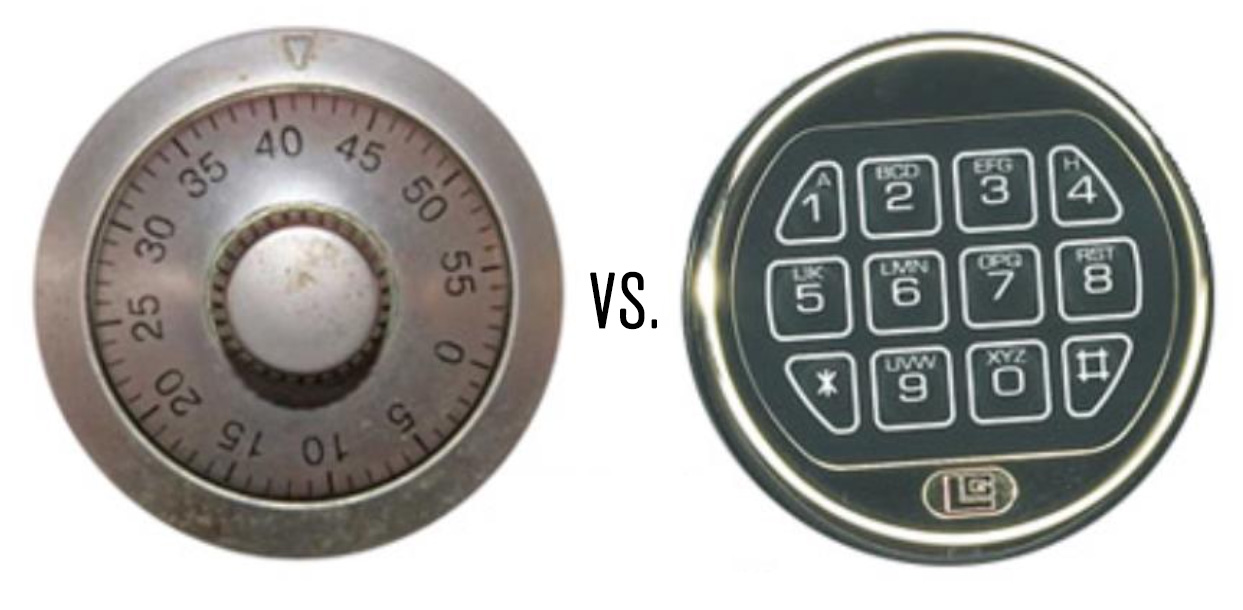 Mechanical dials also have some advantages. Less maintenance (no batteries to replace), fewer failures, the ability to last more than 100 years and a longer warranty are all advantages of mechanical dials. The two types are evenly matched in terms of security, the number of combinations, and human error potential.
Mechanical dials also have some advantages. Less maintenance (no batteries to replace), fewer failures, the ability to last more than 100 years and a longer warranty are all advantages of mechanical dials. The two types are evenly matched in terms of security, the number of combinations, and human error potential.
While on the subject, handgun-size safes also offer a biometric mechanism, generally activated with fingerprints. The challenge with determining the quality of these is that the UL has not currently tested and rated them. However, there is a wide range in cost between an economy quality biometric and a commercial or military grade. Thus, the price is usually a dependable determinant. Keep in mind that there have been instances of children opening this type of lock.
UL 687 – Standard for Burglary-Resistant Safes
In addition to the UL rating for locks, there is also a UL rating for safes. The UL 687 covers a number of tests, including testing door, front face, and body against attack, and resistance to tools, torch, and explosives.
Recommendations
Start by selecting a trusted company that has made gun safes for many years. A few to note include Liberty Safe (1988), Hamilton Safe (1967), FireKing (1951), Schwab Corp (1872), and SentrySafe (1930). Each company offers many price points as well as specialty products that may fill a specific need, such as concealability or use in a vehicle.
It is recommended to get the largest you can afford and for which you have the space for if you’re going for something besides a handgun size. It is not uncommon to expand your firearm collection over time and you’ll need space for ammunition and accessories as well. You can also use the added space for other valuables, such as jewelry, important papers, and priceless photographs.
Keep in mind that even a highly respected company needs to cut some corners to make their budget models more affordable. Continue to apply the criteria offered in this article so that you get the model that provides the level of safety you desire.
Take the time to learn everything you can about the safe company and the safe(s) you are considering. If you meet unreasonable resistance when asking the hard questions, there is a good chance the quality is lacking in some way.
As with most things, obtain the best safe you can afford. It is better to wait to get the firearms until you can manage a superior safe to keep them in. Protecting the investment you have in your firearms and protecting your family from harm means never settling for just “good enough”.
Locksmith Sarasota Is Your Trusted Local Locksmith:
Call 941-281-4100

